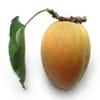Health Benefits
Cancer prevention, Heart care, Improves eye vision, Reduces stress, Regulation of heart rate
Cancer prevention, Heart care, Increases metabolic rate, Reduces stress
General Benefits
Anti oxidant properties, Eye care
Boosts immune system, Controls blood pressure, Digestive aid, Eye care, Helps in weight loss
Skin Benefits
Heals sunburn, Reduces wrinkles, Treatment of skin diseases
Brightens and lightens complexion, Treatment of acne, Treatment of dark spots
Hair Benefits
Prevents hair loss
Promotes longer and healthier hair, Protects hair
Allergy Symptoms
Abdominal pains, Anaphylaxis, Breathing difficulty, Diarrhea, Dizziness, Hives, Itching, Lightheadedness, Nasal congestion, Nausea, Swelling of mouth, tongue or lips, Tingling sensation in mouth, Vomiting, Wheezing
Abdominal pains, Breathing difficulty, Coughing, Diarrhea, Drop in blood pressure, Fainting, Runny nose, Skin rash, Sneezing, Swelling of mouth, tongue or lips, Vomiting
Side Effects
Allergic reaction
Allergic reaction
Best Time to Eat
As a snack in the late afternoon, Eat the fresh ones, avoid mixing with any other foods, don't eat after meal., Morning time (before lunch)
As a snack in the late afternoon, Don't consume at night and before bed, Eat the fresh ones, avoid mixing with any other foods, don't eat after meal., Morning time (before lunch)
Vitamin A (Retinol)
Not Available
Vitamin B5 (Pantothenic Acid)
Vitamin C (Ascorbic Acid)
Vitamin K (Phyllochinone)
Lutein+Zeaxanthin
Not Available
Phytosterol
Not Available
Calories in Fresh Fruit with Peel
Not Available
Calories in Fresh Fruit without Peel
Not Available
Calories in Frozen Form
Not Available
Calories in Dried Form
Not Available
Calories in Canned Form
Not Available
Season
Autumn, Summer
Autumn
Varieties
Reliance, Sweet Scarlet, Spring Snow, Sugar May, Santa Rosa, Red Beauty, Glowhaven, Cresthaven and Redhaven Peaches
Clemenules or Nules and Nadorcott
Color
Pink, Red, White, Yellow, Yellowish-orange
Orange
Inside Color
Yellow
Orange
Taste
Sweet
Sweet, Tangy, Tart
Soil Type
Sandy loam, Well-drained
Loam, Sandy, Well-drained
Climatic Conditions
Cold, Warm
Warm to hot climate
Facts about
- In china, peaches are considered as a symbol of good luck.
- From 1982, august is National peach month in USA.
- In roman times, Peaches were also called as Persian apples, as people assumed that they originated from Persia.
- Clementine was first grown at the citrus research center in USA in 1909.
- It is called as"Christmas orange" as it's limited growing season falls during winter.
- It's a hybrid between Mediterranean and Oranges.
Other Countries
Greece, Italy, Spain, United States of America
Argentina, Brazil, Egypt, Italy, Japan, Morocco, Turkey, United States of America
Top Importer
Germany
United States of America
Botanical Name
Prunus persica
Citrus clementina
Synonym
Not Available
Not Available
Subkingdom
Tracheobionta
Tracheobionta
Division
Magnoliophyta
Magnoliophyta
Class
Magnoliopsida
Magnoliopsida
Species
P. persica
C. clementina
Generic Group
Rose
Citrus fruit
Compare Peach and Clementine
It is important compare Peach and Clementine as both the fruits have a different nutritional value. Their comparison can be done on the basis of their vitamin and mineral content, calories, benefits as well as characteristics, making it easier for us to choose the best fruit for our diet. Their general health benefits are as follows:
Peach Benefits: anti oxidant properties and eye care.
Clementine Benefits: boosts immune system, controls blood pressure, digestive aid, eye care and helps in weight loss.
Fruits are also used as a remedy for various hair problems. The hair benefits of Peach are: prevents hair loss and hair benefits of Clementine are: promotes longer and healthier hair and protects hair. Some fruits are known to cause allergic reactions. The allergy symptoms of first fruit are: abdominal pains, anaphylaxis, breathing difficulty, diarrhea, dizziness, hives, itching, lightheadedness, nasal congestion, nausea, swelling of mouth, tongue or lips, tingling sensation in mouth, vomiting and wheezing and the symptoms of second fruit are: abdominal pains, breathing difficulty, coughing, diarrhea, drop in blood pressure, fainting, runny nose, skin rash, sneezing, swelling of mouth tongue or lips and vomiting. Get sorted Peach vs Clementine comparison with the help of fruit comparison tool by fruitvs.com.









